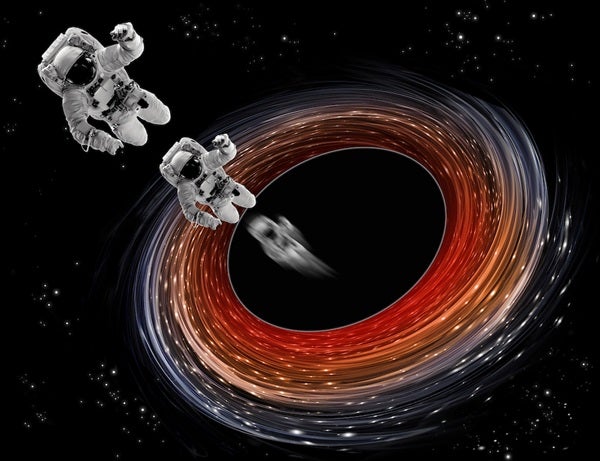This is a fantastic question, and the answer highlights some of the most counterintuitive aspects of the theory of general relativity. The short answer is no, but let’s delve deeper into a few of the strange things that happen when objects approach the speed of light.
To an outside observer, as an object falls toward the event horizon (the point of no return where not even light can escape the gravitational pull of a black hole), two effects come into play. As light leaves the high gravitational field surrounding the black hole and reaches the observer — who is in a lower gravitational field — it loses energy. So, because light becomes more red at lower energies, the object seems to get redder and redder as it approaches the event horizon.
In addition, general relativity predicts that when an observer in a low-gravity environment observes an object in a high-gravity one, the observer will see time pass more slowly for the object. This slowing means that the light emitted by the falling object will be spread out over a much longer time. If you reduce the rate at which light is emitted, it will appear dimmer and dimmer. From the observer’s point of view, as the object approaches the event horizon, time will slow to the point where it will take longer than the lifetime of the universe for the object to emit individual photons.
Thus, as an object falls toward the event horizon of a black hole, it will redden in appearance. It will also appear to emit light more slowly, and thus will become dimmer. The combination of these two effects are that an external observer will see the object redden and fade out of sight, but they will never see it cross the event horizon.










